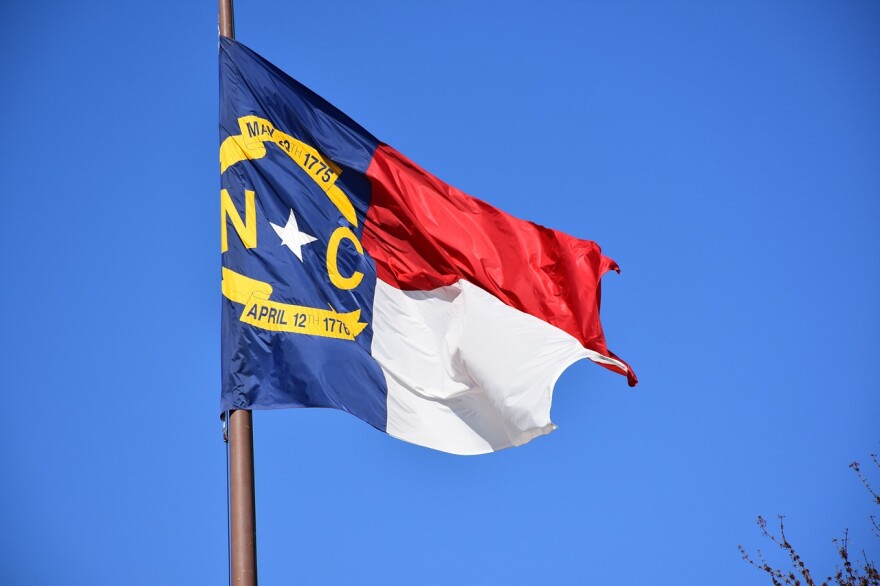It’s common knowledge among political observers that unaffiliated voters are now the largest voting bloc in North Carolina.
What’s less known is that the number of people registered as Democrats is going down, and the number of people registered as Republicans is going up.
The drop in Democrats is slight (in recent years, at least) and the gains by the GOP aren’t particularly large.
But they are happening.
Andy Jackson with the John Locke Foundation, who meticulously tracks changes in voter registration, believes that the GOP will pass the Democratic Party for second place by 2027, with unaffiliated voters remaining the largest group and getting even bigger.
He said party registration in the state is a “lagging indicator” — one that will soon reflect how the state has been voting in recent federal elections for years.
In other words, North Carolina has usually backed GOP candidates for the U.S. Senate and president. Its voter registration will soon reflect that.
Over the last two years, Democrats have lost 81,395 voters. Republicans added 37,285 voters. Unaffiliated voters grew by 232,212.
In 2008, during the excitement over Barack Obama’s candidacy, Democrats had an 866,000 advantage over Republicans in registration, according to the University of Virginia’s Center for Politics. That dwindled to 184,000 as of January.
Here are the shares of the major groups today:
UNA: 36.7%
DEM: 32.5%
REP: 30%
Inside Politics wanted to know: Is this alarming for the Democratic Party — or are they simply swapping out older “Jesse-crat” voters who have voted Republican for years, in favor of younger, unaffiliated voters who back Democrats?
The case for both parties
Inside Politics asked Jackson how he would spin the changes for both parties.
From the Republican perspective, Jackson said: “You are always in better shape … as the party that’s treading water or increasing slightly rather than the party that’s losing members.”
Because people registered as party members vote at higher rates than unaffiliated voters, the more people on your “team” the better.
While most new voters are choosing to be unaffiliated, North Carolina is seeing people move here who are committed conservatives. Many are retirees, coming to places like Brunswick County.
From the Democratic perspective, Jackson said: “They will say the real growth has been in unaffiliateds, especially with young people who are disproportionately Democratic.”
And he added that election results show Democrats are getting votes from unaffiliateds to make up for their shrinking pool of registered voters.
Here is an example: In 2008, Barack Obama won North Carolina by a little less than half a percentage point in a year that he won nationally by 7.2 percentage points. You could say North Carolina was 6.5 percentage points more Republican than the nation as a whole.
In 2020, Donald Trump won the state by 1.3 percentage points in a year that Joe Biden won nationally by 4.5 percentage points. You could say that North Carolina was about 6 points more Republican than the nation as a whole.
Democrats do not appear to be losing ground.
And Jackson said that unaffiliateds tend to vote in line with how their home counties vote. In other words, most unaffiliated voters in Mecklenburg County support Democrats. And since those urban areas are growing, that’s good news for the Democratic Party.
National trends
The University of Virginia’s Center for Politics has looked at voting registration trends in the 31 states that have it. (For the record, our neighbors — Georgia, South Carolina and Virginia — do not have to put down a party affiliation when they register.)
UVA found that, nationwide, the number of people registered as Democrats has been declining.
But not everywhere.
Democratic registration is increasing throughout the nNortheast, in Connecticut, Delaware, New Jersey and Washington, D.C. It’s shrinking in battleground Pennsylvania, which has gone from a "blue wall" state to a toss-up in 2016 and 2020.
Here is what UVA’s breakdown looked like in 2018:

As you can see, there are some states in the South that voted Republican in federal elections but still had a Democratic plurality in terms of registered voters: Louisiana, Florida, North Carolina, Kentucky and West Virginia.
New Hampshire also had more Republicans than Democrats.
UVA updated this map again in 2022. Now look:

As you can see, Florida, Kentucky and West Virginia’s voter registration now reflects how they vote in federal elections.
In fact, of all the 31 states with partisan registration, the party with the lead in registration closely matches how they voted in the 2020 presidential election. Only Arizona (small Republican advantage), Louisiana (Democratic advantage, but dwindling) and North Carolina (more Democrats than Republicans) differed.
North Carolina is likely to continue to be close for years.
And while Democrats believe “demographics is destiny” — voters of color, city voters, young voters — the GOP can find comfort in that their party is the one that’s officially growing, if only a little.


